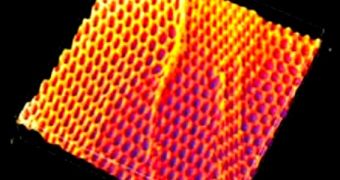A team of investigators from the Harvard University has developed a new material for biotechnology, that could in the near future help experts grow replacement organs a lot easier than currently possible. The innovation was achieved when scientists from the School of Engineering and Applied Science (SEAS) developed a fabric from proteins usually found in muscle tissues. By linking these molecules together, the group was able to develop a scaffold on which various types of tissues can easily grow, Technology Review reports.
The achievement was reached in the lab of SEAS professor Kevin Kit Parker, who was also the lead investigator of the new study. According to the expert, the new scaffolds could also be used to produce advanced bandages for a wide variety of piercing, tearing and burn wounds, which could help the damaged sites heal faster and with less scarring than now possible. The coating could become available within the next few years, Harvard experts believe.
The team got its inspiration from analysis of the human body. They knew that, when new tissue develops in the body, a protein called fibronectin is produced. This strong and stretchy molecule plays an important role in supporting the developing cells, and the Harvard team did nothing more than emulate its actions in the lab. The researchers explain that the subsequent growth of the new organs dictates the shape and structure that fibronectin proteins take on as they develop. This is how the new organs reach their correct form, the SEAS group explains.
In order to produce the new fabric artificially, the investigators rely on a synthetic, water-repelling polymer, on which fibers of fibronectin are deposited. The proteins then unravel, rather than remaining bundled up as usual. After this stage is complete, the mix is added to a layer of water-attracting polymer, which is then placed on a layer of glass. Water is added, and the entire mix is then heated at room temperature. The result is that the proteins in the mix link with each other, producing the new type of fabric. The innovation is bound to have considerable applications in biotechnology, the Harvard team believes.

 14 DAY TRIAL //
14 DAY TRIAL //